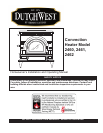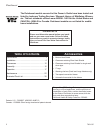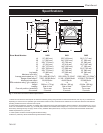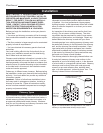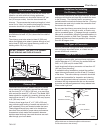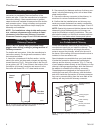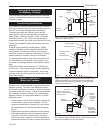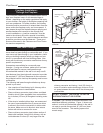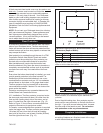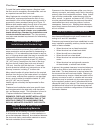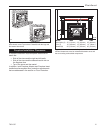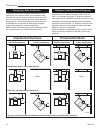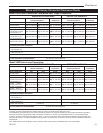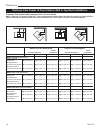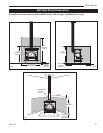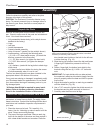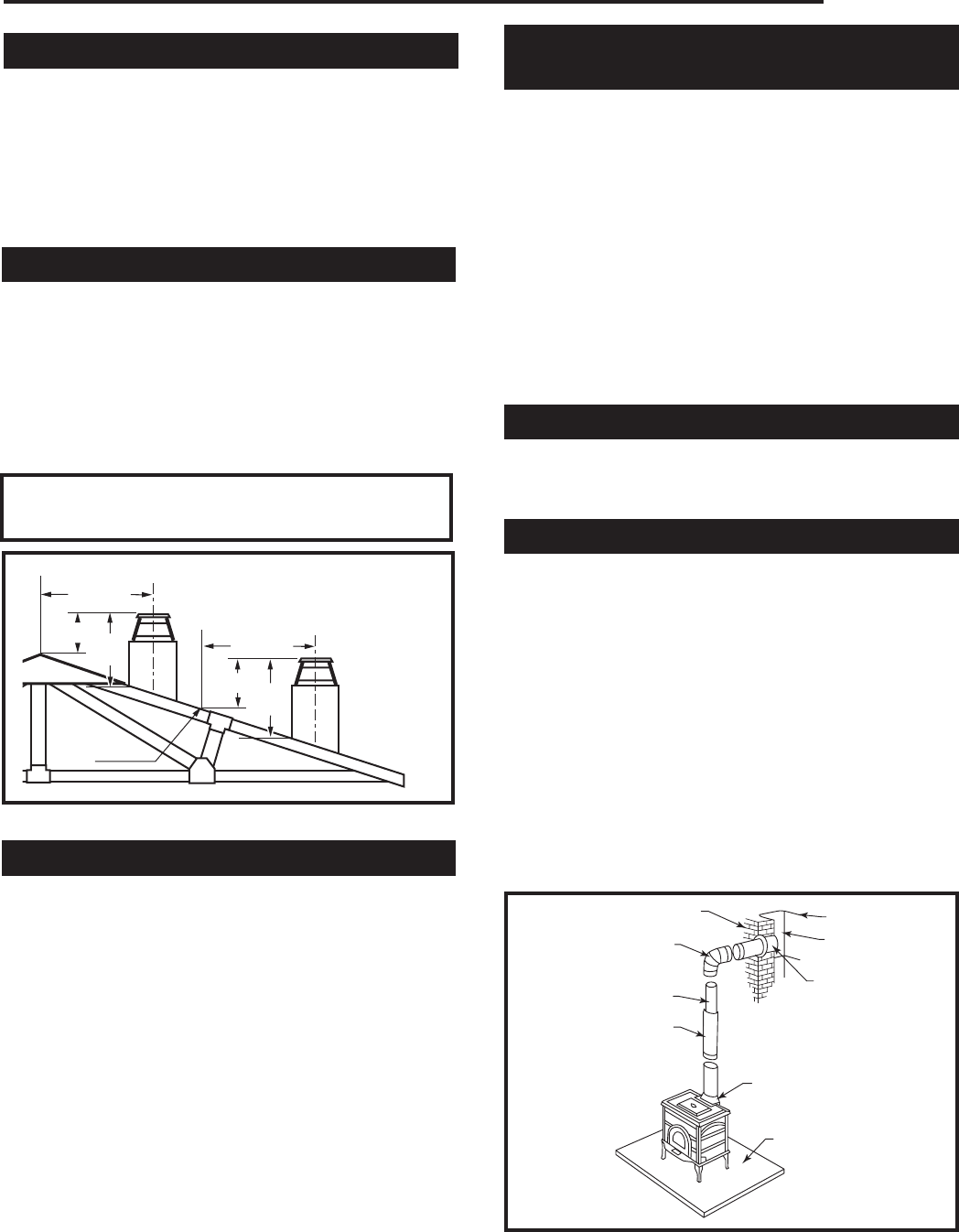
5
Dutchwest
7001135
Prefabricated Chimneys
A prefabricated metal chimney must be one tested and
listed for use with solid-fuel burning appliances.
A horizontal connector run should be inclined 1/4” per
foot (20 mm per meter) from the stove toward the
chimney. The recommended maximum length of a hori-
zontal run is 3 feet (1m) and the total length of chimney
connector should be no longer than 8 feet (2.5m).
Chimney Height
For proper draft and good performance, the chimney
should extend at least 16’ (5 m) above the flue collar of
the stove.
The chimney must also extend at least 3’ (900 mm)
above the highest point where it passes through a roof,
and at least 2’ (600 mm) higher than any portion of a
building within 10’ (3 m). (Fig. 2)
DO NOT CONNECT THIS UNIT TO A CHIMNEY
FLUE SERVING ANOTHER APPLIANCE.
Chimney Size
The Model 2460 and 2461 heaters should be vented
into a masonry chimney with a square flue with nomi-
nal flue size of 8” x 8” (200 x 200 mm), or a round flue
with nominal flue size of 6” (150 mm). The Model 2462
heater should be vented into a masonry chimney with a
nominal flue size of 8” x 8” (200 mm x 200 mm) square,
or 8” (200 mm) round.
Chimney liners larger than 8” x 12” (200 x 300 mm)
may promote rapid cooling of smoke and reduction in
draft, especially if they are located outside the home.
These large chimneys may need to be insulated or
have their flues relined for proper stove performance.
Accessories to help make the connection between
stainless steel chimney liners and the stove are avail-
able through your local dealer.
2' MIN.
2' MIN.
3'
MIN.
0 TO 10'
3'
MIN.
0 TO 10'
AC246
PTL2
4/1/96
Reference
Point
AC246
Fig. 3 The 2/3/10 rule for chimneys.
Guidelines for Installing
the Chimney Connector
The chimney connector is the single-wall pipe, or listed
and approved double-wall pipe that connects the stove
to the chimney. The chimney itself is a masonry or
prefabricated structure that encloses the flue. Chimney
connectors are used only to make the connection from
the stove to the chimney.
Do not pass the chimney connector through a combus-
tible wall or ceiling, or through an attic, a closet or any
similar concealed space. If passage through a combus-
tible wall is unavoidable, follow the recommendations in
the following section on Wall Pass-Throughs. Keep the
passage as short and direct as possible, with no more
than two 90 degree turns.
Two Types of Connector
You may use either a single-wall steel connector of the
size and gauge described below, or a listed and ap-
proved double-wall connector.
Single-Wall Connector
The single-wall chimney connector should be made of
24 gauge or heavier steel, and must have a minimum
internal diameter of 6” (150 mm) for models 2460 and
2461, or 8” (200 mm) for model 2462.
Install single-wall chimney connector not less than 18”
(450 mm) from the ceiling.
In cathedral ceiling installations, extend the prefabri-
cated chimney downward to within 8 feet (2.5 meters)
of the stove. The entire chimney connector should be
exposed and accessible for inspection and cleaning.
Do not use galvanized chimney connector; it cannot
withstand the high temperatures that can be reached
by smoke and exhaust gases and it may release toxic
fumes under high heat.
ST418
chimney connector
6/00
Chimney
Elbow
Slip Pipe
Standard Connector
Flue Liner
Flue
Thimble
Flue Collar
Floor Protector
ST418
Fig. 4 Sections of a steel chimney connector of at least 24
gauge thickness are fastened together with screws to
connect the stove to the chimney.



